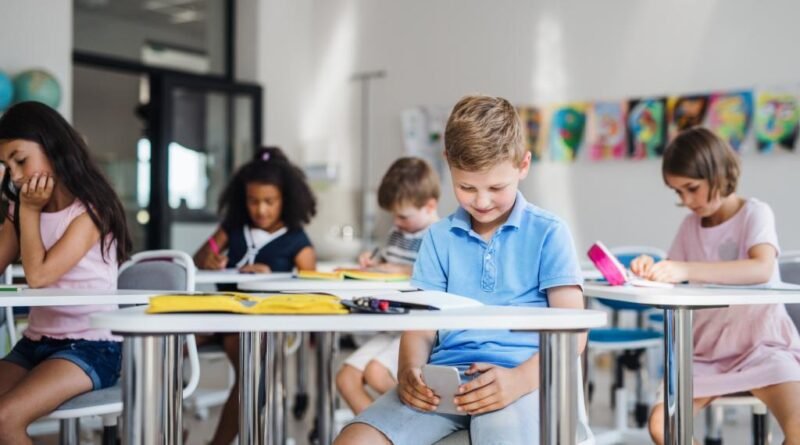Reasons Why Smartphones Should Be Prohibited in Schools
America’s children are hurting. Behind in school after pandemic closures, many children are now struggling with another major barrier to learning — smartphone addiction. Two-thirds of Americans students say they are distracted by their digital devices during class.
There’s also a second-hand smoke effect: More than half of students are distracted by the devices of other students, according to a 2022 Program for International Student Assessment study. It’s a complex problem. But one solution is embarrassingly simple — ban phones in America’s classrooms.
As a society, we don’t allow alcohol or drugs in schools. Why should we allow highly-addictive phones to be used in the same setting?

Today’s phones are designed to grab the attention of users — and never let go. The average teenager receives 273 cell phone notifications per day, according to a 2023 Common Sense Media report.
Limitless apps entice children with the promise of the next dopamine surge, a predatory business model. While numerous studies have shown the negative psychological impact of these devices on developing brains, they can also take a physical toll on the body.
The constant checking, scrolling, and swiping that children succumb to increases cortisol “stress hormone” levels, increases blood pressure, and worsens sleep quality.
While phones are not the sole driver of today’s child mental health epidemic, they are playing a major role. Forty-four percent of teenagers say that their cell phones make them anxious, according to a Pew Research study. That’s probably because apps can make children feel ugly, left out, and lonely. Addictions isolate people, and phone addiction is no exception.
Teenagers use their phones in lieu of face-to-face interaction with peers. But school is exactly where children should be developing those social muscles. In fact, they need human connections for their learning and to be a part of a community. The lack of human connections may explain why suicide and depression rates are surging, up 167% and 145% respectively for girls over the last decade, according to the CDC.
Thankfully, some leaders are taking action.
Last month, Virginia Governor Glenn Youngkin signed an executive order to create phone-free education in the state’s public schools K-12. Governor Kathy Hochul of New York has introduced a similar ban and South Carolina, Florida, and Louisiana currently have some types of restrictions on devices in schools.
These governors are attempting to correct years of unchecked technology stealing the attention of students when they are supposed to be learning. If elected officials are serious about protecting children, they should follow their lead fast.
The matter could not be more urgent. Forty percent of children will have a mental health condition by the time they are 18. And a whopping 57% of U.S. girls today feel sad or hopeless, according to a CDC report, a doubling since 2011. The data show that students are crying out for help with their phone addiction. Let’s not abandon them.
New York University psychologist Dr. Jonathan Haidt, who has studied the issue extensively, has pointed out that “Heavy phone or social-media use may also have a cumulative, enduring, and deleterious effect on adolescents’ abilities to focus and apply themselves,” writing on his Substack column, After Babel.
Teachers are also sounding the alarm. Seven in ten teachers say that cell phone distraction is a major problem in the classroom, according to a study by the Pew Research Center. The problem is also worsening the teacher shortage crisis in public schools because of the new cell phone culture of schools. Teachers that leave the profession have cited issues with social media in the classroom as a major factor to their departures.
Banning cell phones in school is entirely feasible. At St. Anthony Middle School in Minnesota, students are now required to put their cell phones in their lockers between 8:00 am and 2:45 pm. Principal Amy Kujawski enacted the ban in part to deal with online misbehavior. “Smartphones were a giant distraction to learning and they were also interrupting our chances to build strong relationships with our students,” she told Minnesota Public Radio. As a result of her policy, the school experienced a near elimination of phone-related behavioral issues.
Doing nothing is not an option. Do we really trust Silicon valley companies, who profit from this addiction, to meaningfully help the current mental health crisis of children? I don’t.
States are looking for practical solutions to address teacher retention, student performance and mental health.
A phone ban in the classroom can help with all three.
Marty Makary is a Johns Hopkins School of Medicine professor, an advisor to Governor Glenn Youngkin, and author of the forthcoming book “Blind Spots: When medicine gets it wrong and what it means for our health.“



